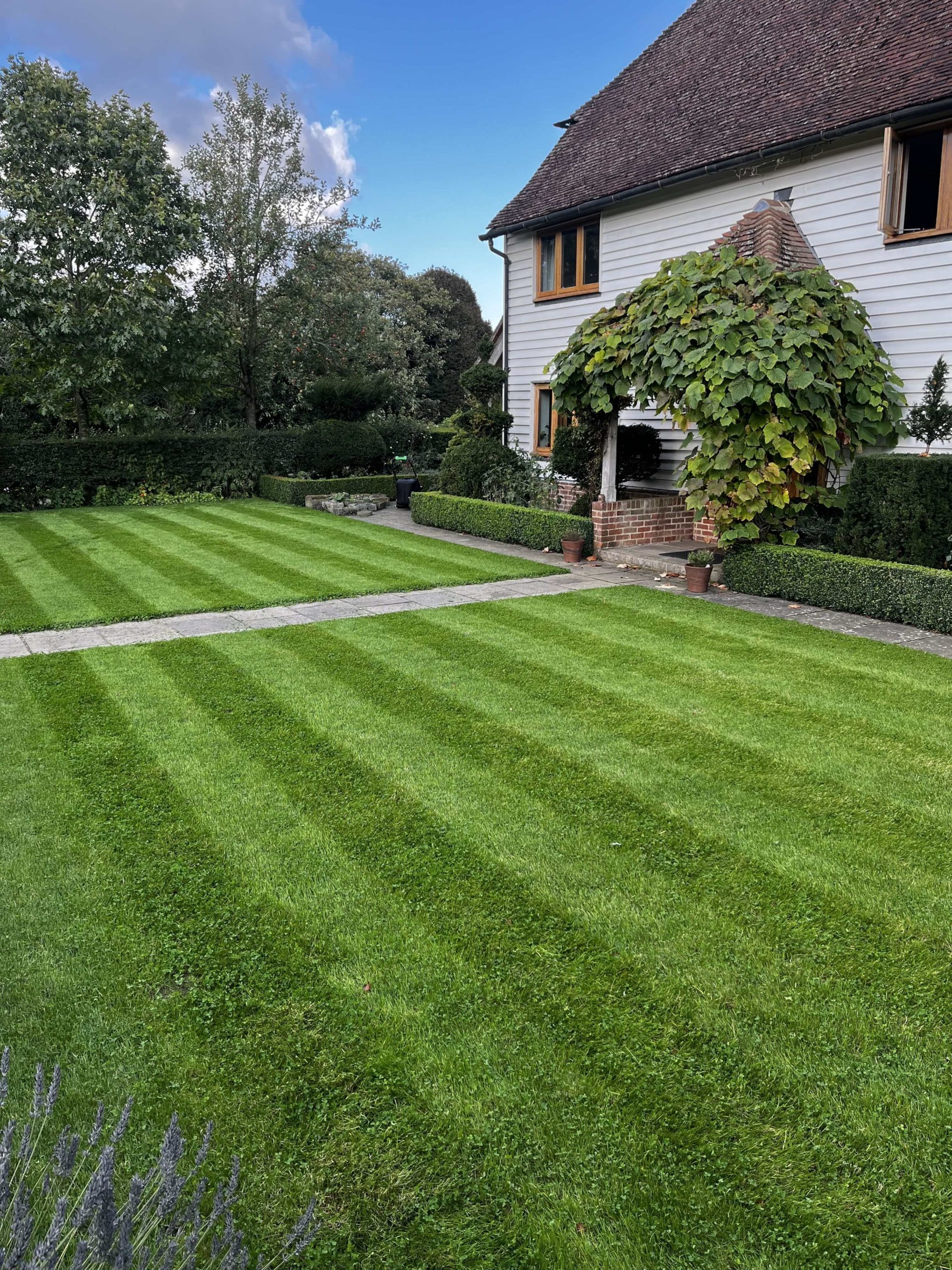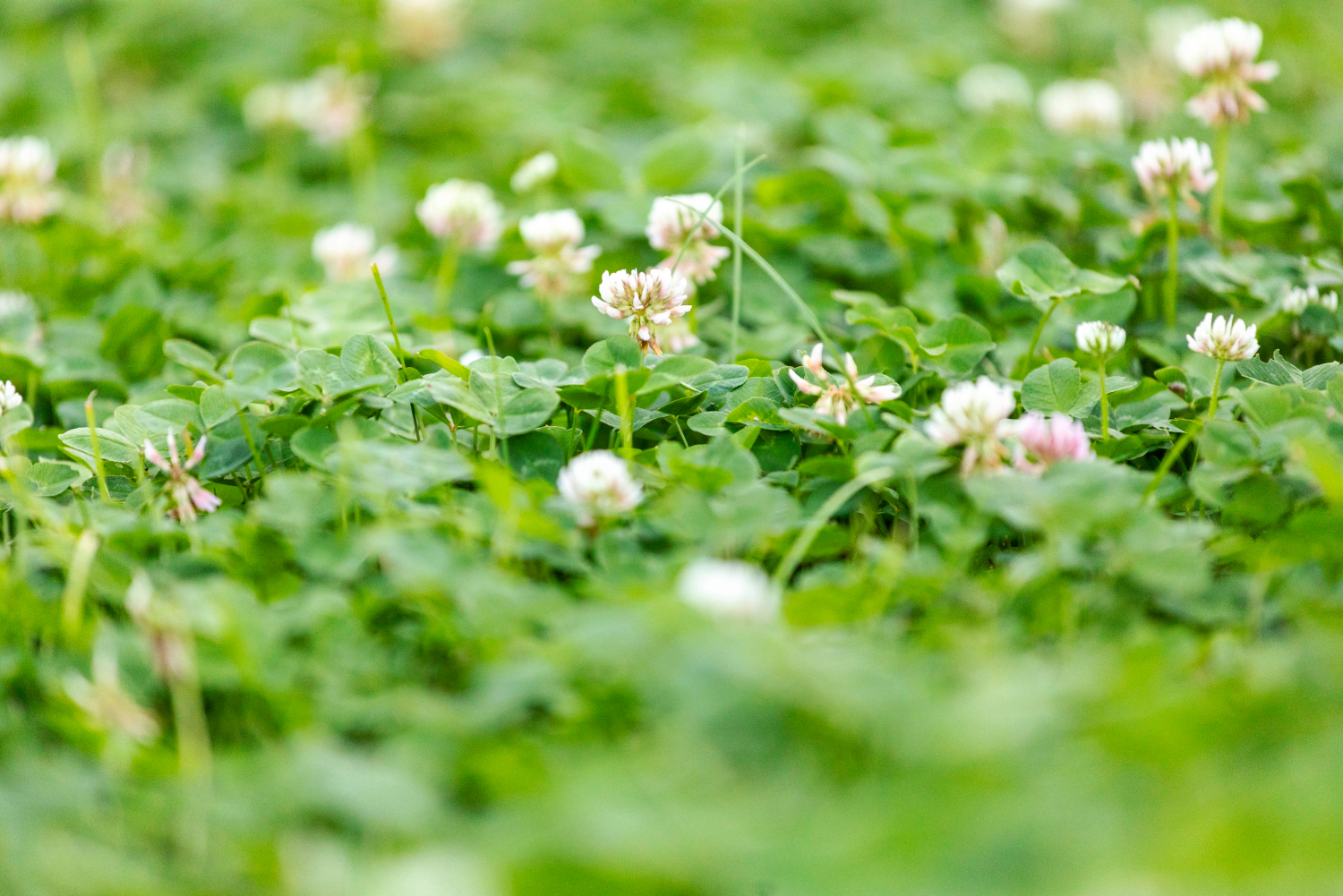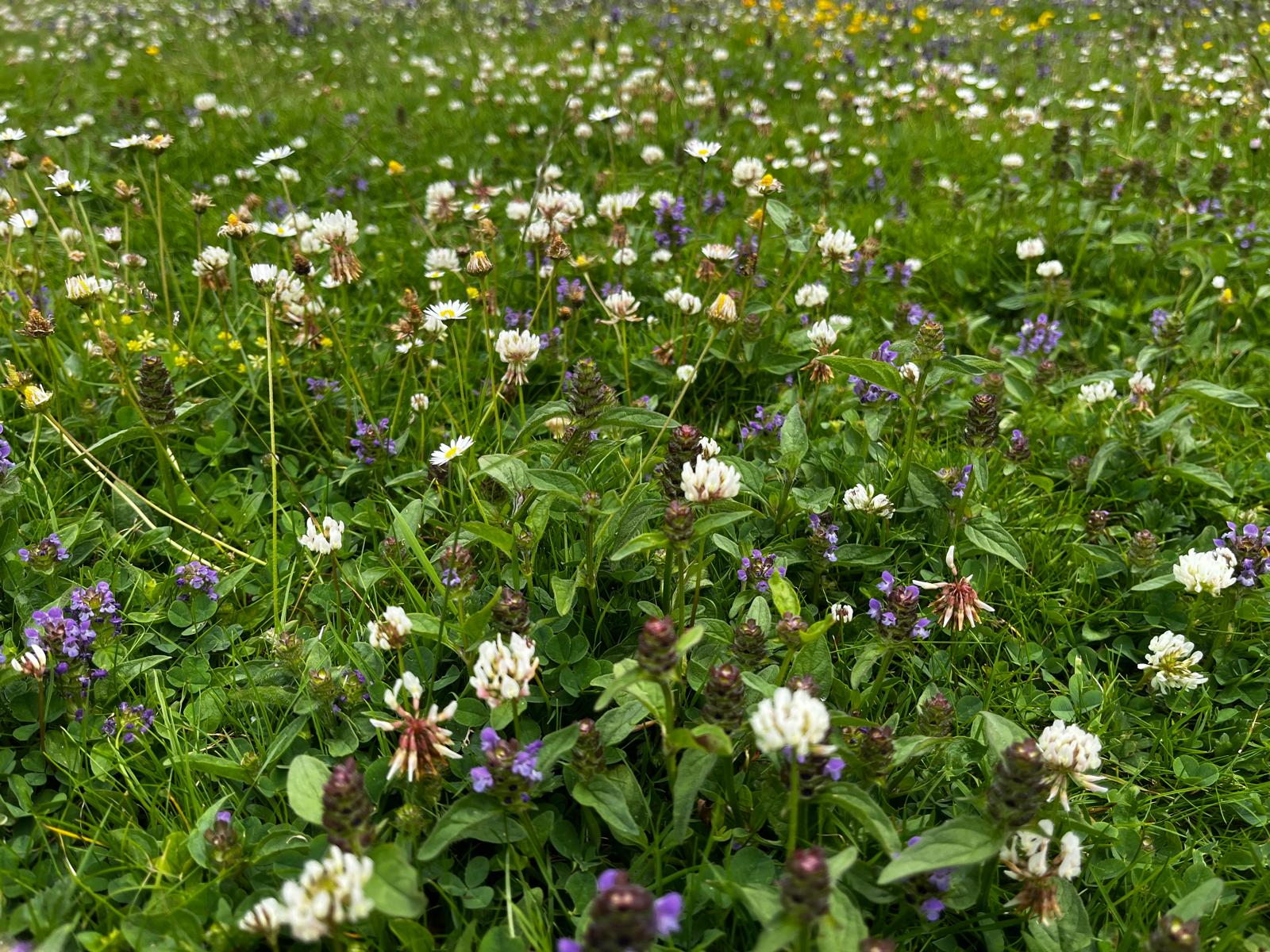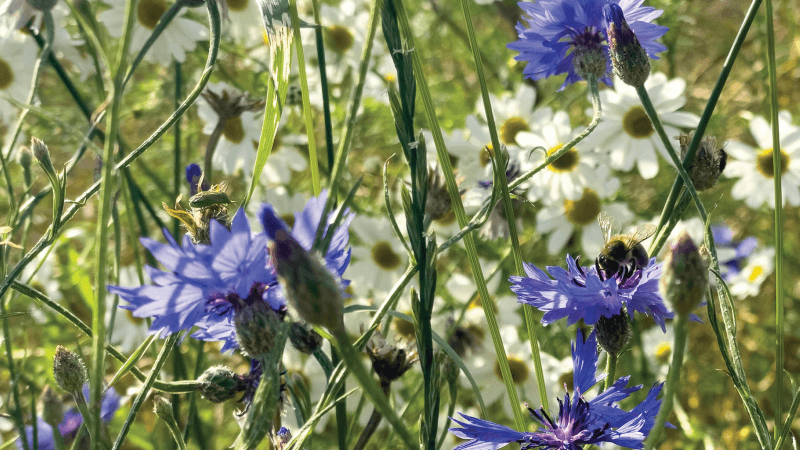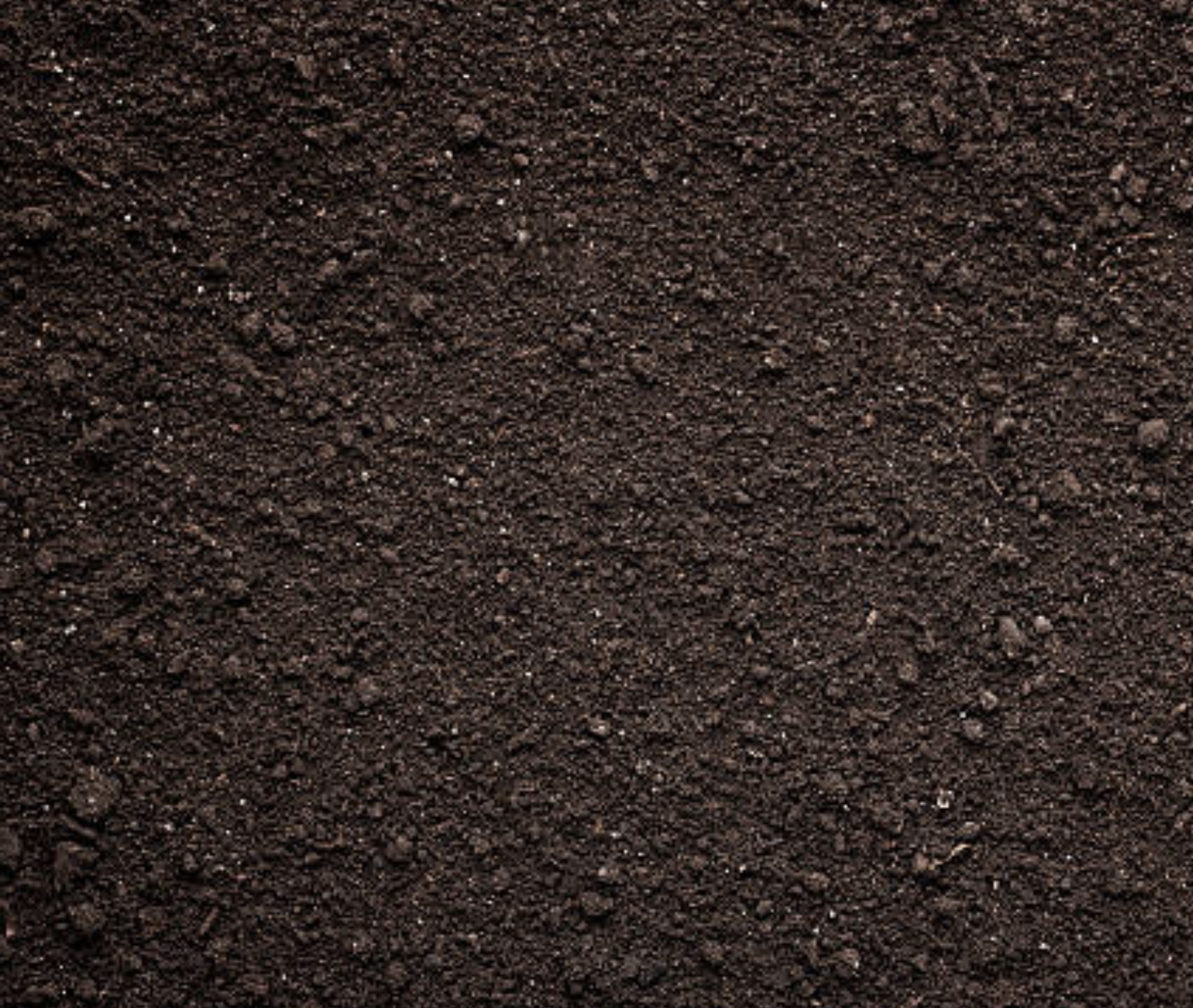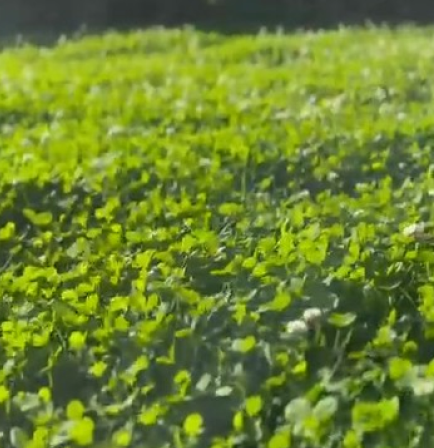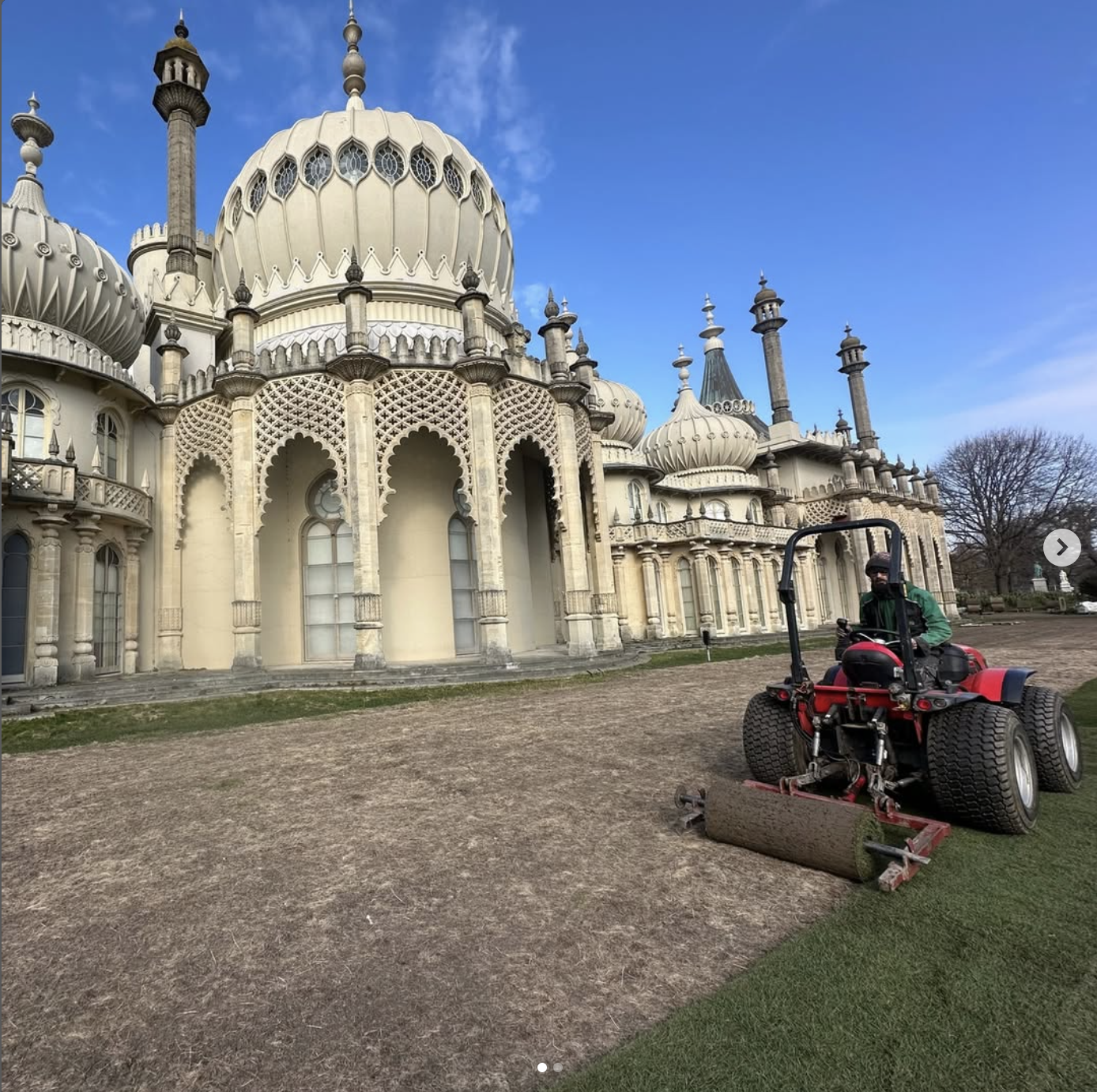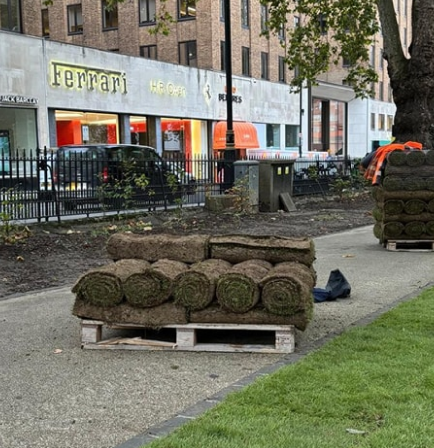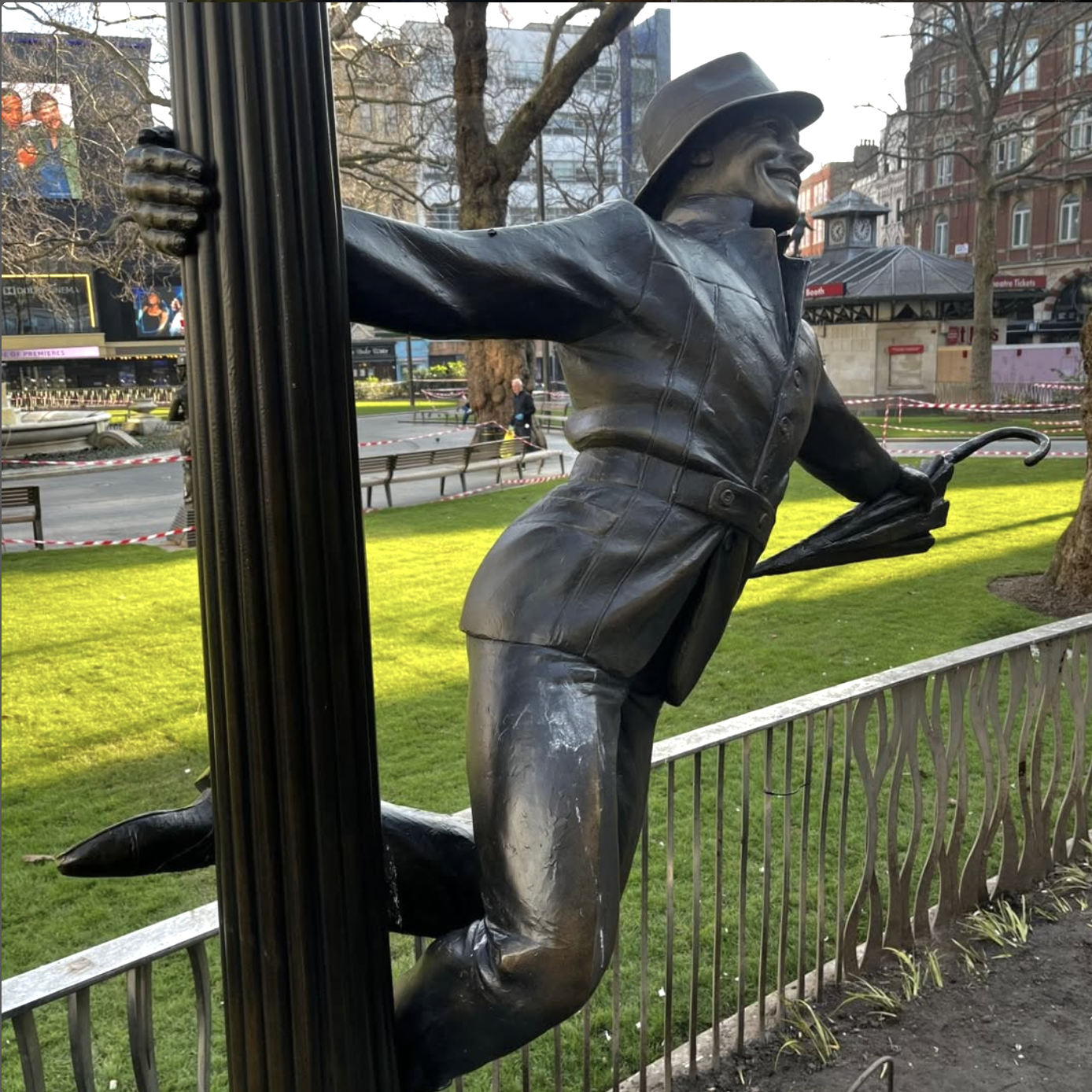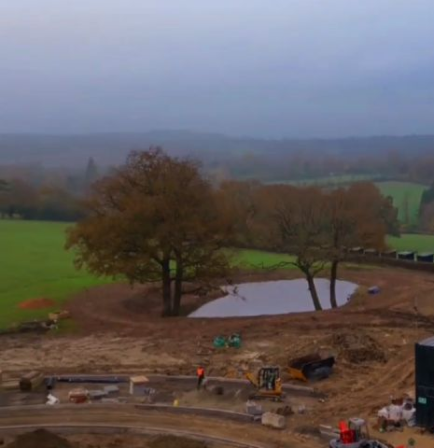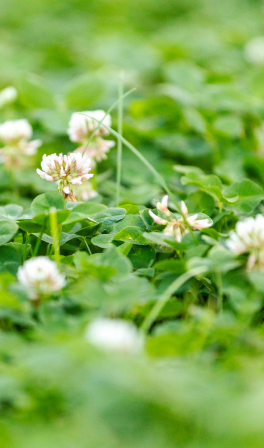Clover lawn maintenance is surprisingly straightforward. While clover lawns offer remarkable environmental benefits with minimal upkeep, they do require some specific care to keep them looking their best. If you’ve already made the switch to clover or are considering our Clover Rich Eco Turf, this guide will help you maintain a healthy, vibrant lawn year-round.
For a broader overview of why clover lawns are worth considering, check out our ultimate clover lawn care guide.
Mowing your clover lawn
Cutting heights for different looks
Your mowing height depends entirely on your aesthetic preference:
- Manicured appearance: 30-40mm
- Natural, cottage garden style: 50-70mm (allows flowering)
- Wildlife-friendly: 70mm+ or mow every 3-4 weeks (perfect for No Mow May)
Frequency guidelines
Clover grows more slowly than traditional grass, so mowing requirements are reduced:
- Spring/early summer: Every 2-3 weeks
- Mid-summer: Every 3-4 weeks (growth slows in heat)
- Autumn: Every 3-4 weeks as growth declines
- Winter: Generally no mowing required
Top tips
- Sharpen mower blades at the start of each season. Sharp blades create clean cuts that heal quickly, whereas dull blades tear leaves, leaving brown, ragged edges that are more susceptible to disease.
- Avoid mowing wet clover when possible. The leaves become slippery and don’t cut cleanly. If you must mow damp clover, raise your cutting height slightly.
- Leave clippings on the lawn. They decompose quickly, returning nutrients to the soil and reducing waste. Only collect clippings if they’re forming thick clumps that could smother the plants beneath.
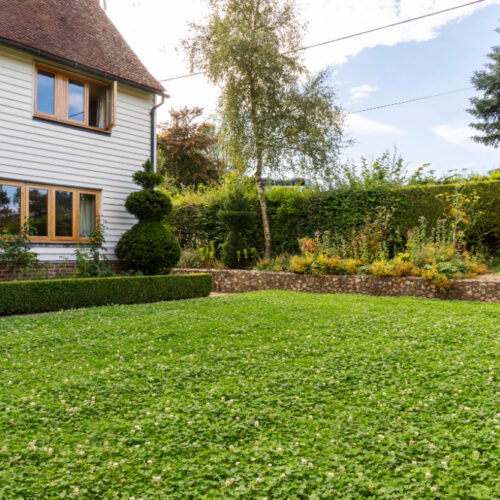
Managing diversity in your clover lawn
Embracing native species
One of the joys of clover lawns is their compatibility with other low-growing plants. Many so-called “weeds” are actually native wildflowers that support pollinators and enhance biodiversity. Species like daisies, selfheal, bird’s-foot-trefoil, dandelions, and even creeping buttercup provide valuable nectar sources and add seasonal interest.
If you’re drawn to a more naturalistic, wildlife-friendly approach, consider allowing these volunteers to establish alongside your clover. This creates a mini-meadow effect similar to our Floral Lawn turf.
When to manage unwanted plants
That said, some plants may not suit your vision or could become problematic:
- Aggressive species like docks, thistles, or brambles
- Coarse grasses that create uneven texture
- Plants that spread too vigorously for your space
Hand-weeding for purists
If you prefer a neater clover-dominant lawn, hand-weeding is your best option.
Use a narrow weeding tool or old kitchen knife to extract unwanted plants with their roots intact. Spring and autumn, when soil is moist, are ideal times for weeding.
Natural suppression
The best defence against genuinely problematic plants is maintaining dense clover coverage. Overseed bare patches promptly and keep mowing at 40-50mm to prevent unwanted species from dominating whilst still allowing your clover (and any desirable companions) to thrive.
Repair and renovation
Diagnosing thin or bare patches
Bare patches can result from:
- Soil compaction in high-traffic areas
- Prolonged shade
- Poor drainage leading to waterlogging
- Pest damage (rare)
- Winter frost damage
Overseeding techniques
Spring (March-May) and early autumn (September-October) are optimal for overseeding. Lightly rake bare areas to create a fine tilth, broadcast clover seed, and keep moist for 2-3 weeks until established.
Repairing damaged areas
For larger bare patches (over 30cm), consider using clover turf plugs or small sections of turf rather than seed for faster results. Ensure good soil contact and water regularly for the first fortnight.
Addressing compaction
Heavily compacted areas benefit from light aeration before overseeding. Use a garden fork to create holes 10-15cm deep, then top-dress with compost before reseeding.
When to re-turf
If more than 30% of your lawn is bare or damaged, or if soil quality is very poor, re-turfing may be more practical than patching. Our Clover Rich Eco Turf provides instant results compared to gradual seed establishment.
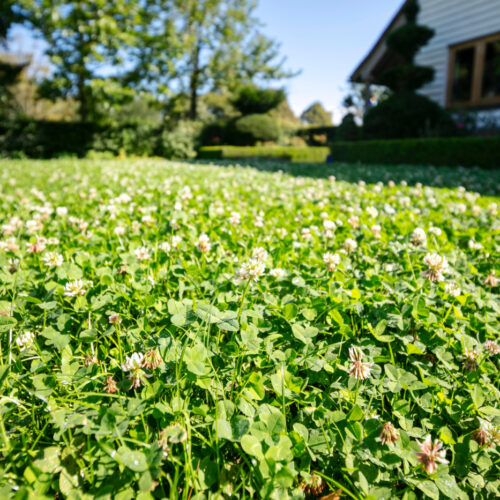
Soil health and aeration
Understanding your soil
Clover tolerates a wide range of soil types but thrives in slightly acidic to neutral conditions (pH 6.0-7.0). Heavy clay soils benefit from occasional aeration, whilst sandy soils may need organic matter to retain moisture.
When and how to aerate
Aerate in spring or autumn if you notice:
- Water pooling on the surface
- Reduced growth despite adequate conditions
- Difficulty inserting a garden fork into soil
Use a garden fork or hollow-tine aerator, creating holes 10-15cm deep across compacted areas. This isn’t typically necessary more than once every 2-3 years.
Top-dressing considerations
Light top-dressing with fine compost (5-10mm depth) can improve soil structure and help level minor surface irregularities. Apply in early autumn, brushing it into any gaps. Avoid covering clover crowns completely.
pH and clover
Clover fixes nitrogen most efficiently in neutral to slightly acidic soil. If your clover seems lacklustre despite good conditions, consider testing soil pH. Avoid lime applications unless pH drops below 5.5.
Common problems and troubleshooting
Brown patches
Brown patches in clover lawns are less common than in grass but can occur due to:
- Fungal diseases in persistently wet conditions (improve drainage)
- Pest damage from leatherjackets or chafer grubs (rare; consider nematode treatments)
- Chemical spillage (fence paint, petrol, strong detergents)
Patchy growth or die-back
If clover dies back in patches, check for:
- Waterlogging (improve drainage or create channels)
- Severe compaction (aerate)
- Deep shade (clover needs at least 4 hours sunlight daily)
Clover not flowering
If you want flowers but they’re not appearing:
- You may be mowing too frequently or too low
- Allow 3-4 weeks between mowing and maintain height above 50mm
- Ensure your clover variety produces visible flowers (ours does)
Balance issues
If grass is outcompeting clover, you may be mowing too short (below 30mm) or applying fertiliser, which favours grass growth.
If clover is dominating completely, increase mowing frequency slightly to favour grass, or simply embrace a clover-dominant lawn.
Pest and disease issues
Clover lawns are remarkably disease-resistant. Genuine problems are rare, but if you suspect disease, ensure you’re not overwatering and that air circulation is adequate.
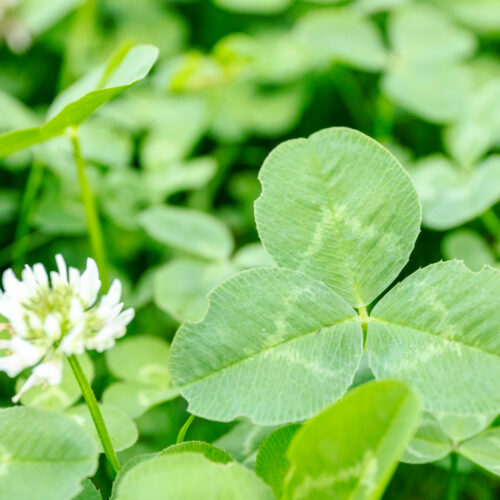
Seasonal deep dives
Spring renovation
March-April is ideal for assessing winter damage:
- Rake away dead material and debris
- Identify and repair bare patches
- Overseed thin areas whilst conditions are favourable
- First mow should be at a higher setting (50mm+)
Summer stress management
During hot, dry periods:
- Clover’s deep roots usually mean no watering is needed
- If extreme drought causes wilting, water deeply once weekly rather than frequent light watering
- Raise cutting height to 50mm+ to help retain soil moisture
- Avoid heavy traffic during drought stress
Autumn preparation
September-October:
- Overseed any patches that appeared during summer
- Light aeration if needed
- Remove fallen leaves promptly to prevent smothering
- Final mow can be slightly lower (30-40mm) for neater winter appearance
Winter protection
Clover is remarkably winter-hardy:
- Avoid walking on frosted clover (leaves can be damaged)
- No feeding or treatments required
- Remove heavy snow accumulation if it persists for weeks
- Generally a hands-off season
Pet and heavy use areas
Managing high-traffic zones
In areas of concentrated foot traffic:
- Consider creating defined pathways with stepping stones or gravel
- Raise mowing height to 50mm+ in these areas for more resilience
- Rotate play areas if possible to allow recovery
- Accept that some wear is inevitable in genuinely heavy-use spaces
Pet urine spot prevention
Clover is naturally more resistant to pet urine than grass thanks to its nitrogen-fixing abilities. However, concentrated urine from larger dogs can still cause issues:
- Encourage pets to use different areas of the garden
- Rinse affected spots with water if you catch them immediately
- The nitrogen-fixing properties help clover recover faster than grass would
Creating resilient play areas
For children’s play spaces:
- Maintain clover at 50-60mm for cushioning and resilience
- Mix in hardwearing grass varieties in the highest-use spots
- Consider wood chip or rubber mulch under play equipment
- Clover’s rapid recovery makes it suitable for moderate family use
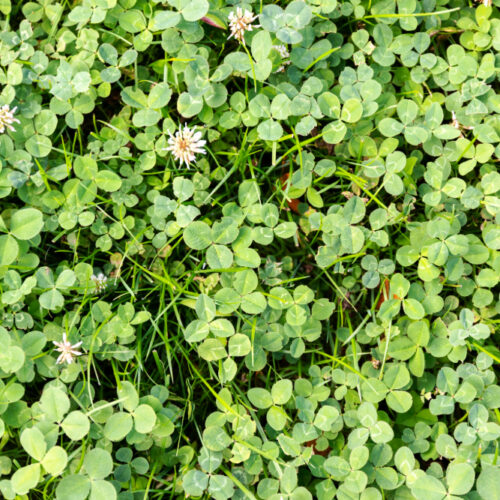
Long-term clover lawn maintenance (years 2-5+)
Evolution of maintenance needs
Established clover lawns (2+ years) require even less intervention:
- Root systems deepen, improving drought tolerance further
- Weed suppression improves as coverage becomes denser
- Mowing frequency may reduce as clover matures
Refreshing mature lawns
Every 3-5 years, consider:
- Light overseeding to introduce fresh vigour
- Top-dressing with compost to maintain soil quality
- Gentle scarification to remove any thatch build-up (rare in clover)
Achieving ideal balance
The grass-to-clover ratio will shift over time based on your maintenance:
- More frequent mowing favours grass
- Less frequent mowing allows clover to dominate
- Most gardens naturally settle at 30-50% clover coverage
Adapting to climate changes
As summers become hotter and drier, clover’s advantages become more pronounced. You may find maintenance requirements decrease further over time as clover proves its resilience compared to traditional grass.
Conclusion
Clover lawn maintenance is refreshingly straightforward. By mowing less frequently, avoiding chemicals, and embracing a more relaxed approach to perfection, you’ll spend less time on maintenance and more time enjoying your garden.
The key principles are:
- Mow higher and less often than traditional grass
- Hand-weed when necessary, avoiding all herbicides
- Overseed bare patches promptly in spring or autumn
- Trust clover’s natural resilience – it rarely needs intervention
For persistent problems or if you’re considering expanding your clover lawn, get in touch with our team or explore our Clover Rich Eco Turf for instant, sustainable results.



